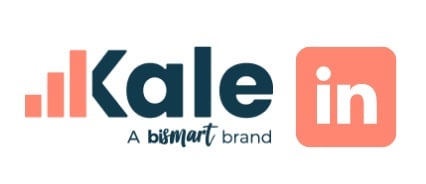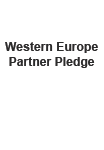The term 'insight' has become very popular in the business environment and especially in marketing, advertising and business intelligence. However, there is still some confusion about what an insight is, what it is used for and how companies use it.

If you work in marketing, advertising, communications, with business intelligence tools or data analytics, you probably already know what an insight is. However, despite being a crucial asset for companies, many business executives and managers still don't understand what an insight is.
What is an insight?
The term 'insight' means understanding, perception or knowledge. The word has multiple connotations that vary according to the field of study. For example, psychology differentiates between three types of insights: intellectual insights, emotional insights and structural insights.
Beyond psychology, the word insight is also very common in the business world, especially in marketing, communication, branding, market research and business intelligence.
In this field, the marketing connotation of the term does not stray too far from its original meaning, since there are different types of insights. A marketing insight is basically marketing knowledge. However, it is not just any kind of knowledge or what, outside the business environment, we can understand by knowledge.
In business an insight is knowledge that adds value and serves to create or improve something. A company has insights when it has valuable information that allows companies to generate intelligence and understand what is happening, why and how something can be solved, reversed or improved.
We also talk about insights when we find knowledge that allows us to solve a business problem. In marketing and advertising, —especially in data-driven marketing—, for example, it is common to call insights to valuable information that provides key knowledge about customers —customer intelligence— or for the development of a campaign as insight.
Of course, insights come from research and, nowadays, primarily from data analysis. However, data is not an insight. However, from data we can obtain insights through data analysis, contextualisation, enrichment and so on. Only by transforming data into insights companies are able to carry on data-driven transformation processes.
For data to be an insight it must meet at least these requirements:
- Provide intelligence that is useful and applicable to the business activity.
- Help in the decision-making process.
- Drive strategies or actions.
- Help to solve a problem, avoid it or improve some aspect of the business.
If you want to know more about the difference between data, information and insights, you can read the article: 'What is the difference between information and insights'.
Why are insights useful?
In the business world, insights are essential when it comes to defining strategies and driving actions designed to boost business through data.
In marketing insights mostly come from customer data and are used to create campaigns, content and customer experiences that better meet consumers' needs and deliver value. Insights are also the basis for content personalisation and are used to carry out customer engagement actions such as creating buyer personas and other types of customer segmentation, optimising the customer experience or undertaking customer-centric strategies.
Beyond marketing, an insight is useful for any business area and can even be helpful for the optimisation of a company's own business activity, operations and work routines, as well as its strategic and action plan.
5 Great examples of business and marketing insights
Here are 10 examples of great marketing or advertising campaigns that have emerged from an insight and prove that knowledge is the engine of brilliant ideas. Each of the marketing campaigns on the list is an example of insight marketing.
1. Nestlé
In 2016, Nestlé conducted a survey on how the people in charge of cooking during the Christmas holidays celebrate Christmas. The study revealed several insights such as the fact that 64% of the people who cook during Christmas are women, that 1 in 4 hosts eat their meals cold and that 100% of them consider that guests are not aware of the effort involved in cooking for everyone. Nestlé then applied these insights in its own advertising campaign, which resulted in a tribute to all of them.
2. Ikea
Keeping up with the Christmas theme, in 2018 Ikea launched a spot that left no one indifferent. The Swedish brand managed to associate its brand with a message that appeals to all audiences, addressing a current social issue that can also be easily linked to the brand's products.
3. Lego
In the early 1990s, Lego went through a phase of standstill after years of growth. Despite several attempts to revitalise the brand by expanding the product range, in 1998 Lego registered financial losses for the first time in a long time.
In the early 2000s, Lego tried to overcome the blow by completely transforming its product range, offering innovative and different pieces. However, their efforts proved to be unsuccessful, as the new pieces did not appeal to the public who were convinced Lego had lost its essence.
Between 2004 and 2006, the brand carried out a design thinking process to reverse the situation. The procedure was long, combined different innovation processes and concluded in the achievement of the necessary insights to create a strategic recovery plan fragmented in 3 phases that led the company to success.

4. Patek Philippe
In 2019, the men's watch brand Patek Philippe completely revamped the concept, graphic design and channels of its now legendary Generations campaign, first launched in 1996.
Patek Philippe understood that times change and that brands must adapt to cultural and social trends. In response to this, the company conducted a study focused on finding out the main characteristics of the 'new man' of today. The brand gathered the insights it needed to transform its campaign, which now focuses on "modern fatherhood" or the new roles of fatherhood.
5. Spotify
Spotify has successfully harnessed the power of social media in its recent campaign based on the analysis of the most listened playlists, both globally and individually.
Spotify has managed to transform the platform's users into its own advertisers by offering an annual personalised report of the most listened to artists for each user that can be easily shared on social media.
In short, an insight is valuable information that provides knowledge and intelligence to a company and is useful for creating or improving something or solving problems in any area of a company.
In the age of data, insights now emerge from data analysis. Data analysis goes one step further and is now complemented by artificial intelligence, deep learning or machine learning aimed at finding more and/or better insights.
Still with us?
If you are interested in customer strategies, marketing insight and sales, follow us on LinkedIn to keep up to date with everything we publish.




